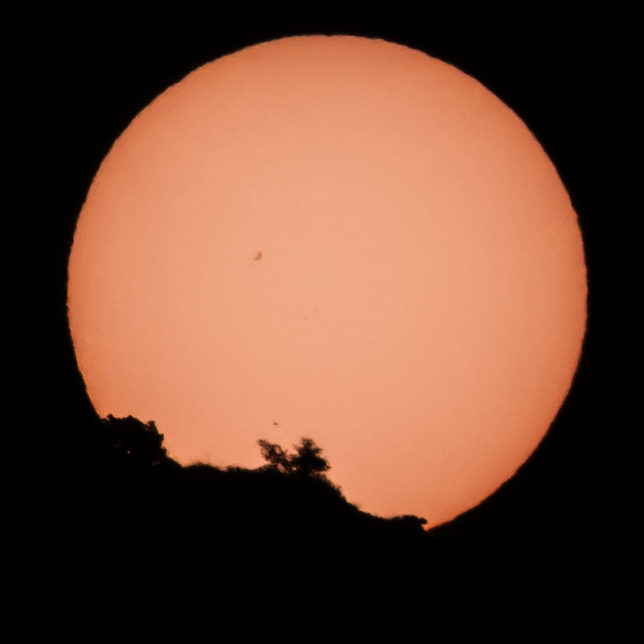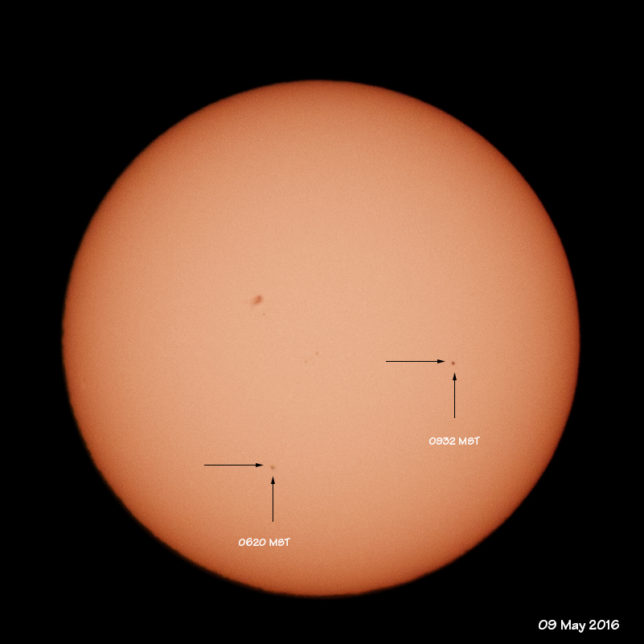On Monday, 09 May 2016, Mercury transited the Sun. The transit or passage of Mercury across the face of the Sun is a relatively rare occurrence and there are approximately 13 transits of Mercury each century. The next transit will be in 2019. If you missed this one, you don’t have to wait too long for the next one. But if you miss that one, you will have to wait until 2032 for another chance.
A typical transit lasts several hours. During a transit, Mercury can be seen as a very small black disk moving across the face of the Sun.
The transit was already in progress as the sun rose across the western states. This meant that I could capture an image of the sun with Mercury in transit and have some interesting foregrounds as a dark silhouette. I had hoped to capture images as the sun moved between the spires of Cathedral Rock but the geometry didn’t quite work out. The location with the best alignment also had obstacles in the way. So, on to a second choice. This option had the sun rising from the southern edge of Cathedral Rock.
The first image shows the rising sun with rocks and trees on Cathedral Rock forming a dark silhouette. Mercury can be seen as a faint dark spot just above the outline of the tree.

The second image is a composite of two images taken ~3 hours apart showing the movement of Mercury across the face of the sun. I took photos for about 15–20 minutes after sun rise then put the equipment away so that we could do a trail run in the area. When we returned, the transit was still in progress and I took a few more images—allowing me to create the composite.

These images were taken with a “consumer-type” zoom camera (Panasonic Lumix FZ150) which has a maximum zoom of 600 mm (equivalent) focal length. I used a 10-stop neutral density filter (ND3.0) which blocks ~99.9% of the light allowing a reasonable exposure (ISO 100; f/6.3, 1/2000 s).
Mercury is small. Even with the large (equivalent) focal length, the planet in transit makes only a very small dot in the image. Compare this with Venus, which transited the sun in 2012 and is more easily visible against the disk of the sun.
The next few transits of Mercury are in 2019, 2032, and 2039. The next transit of Venus is in 2117. Yes, 2117! So I’m happy to have seen the Venus transit in 2012 and the Mercury transit in 2016. They are more rare than total eclipses of the sun. The next total eclipse of the sun across North America is 2017.